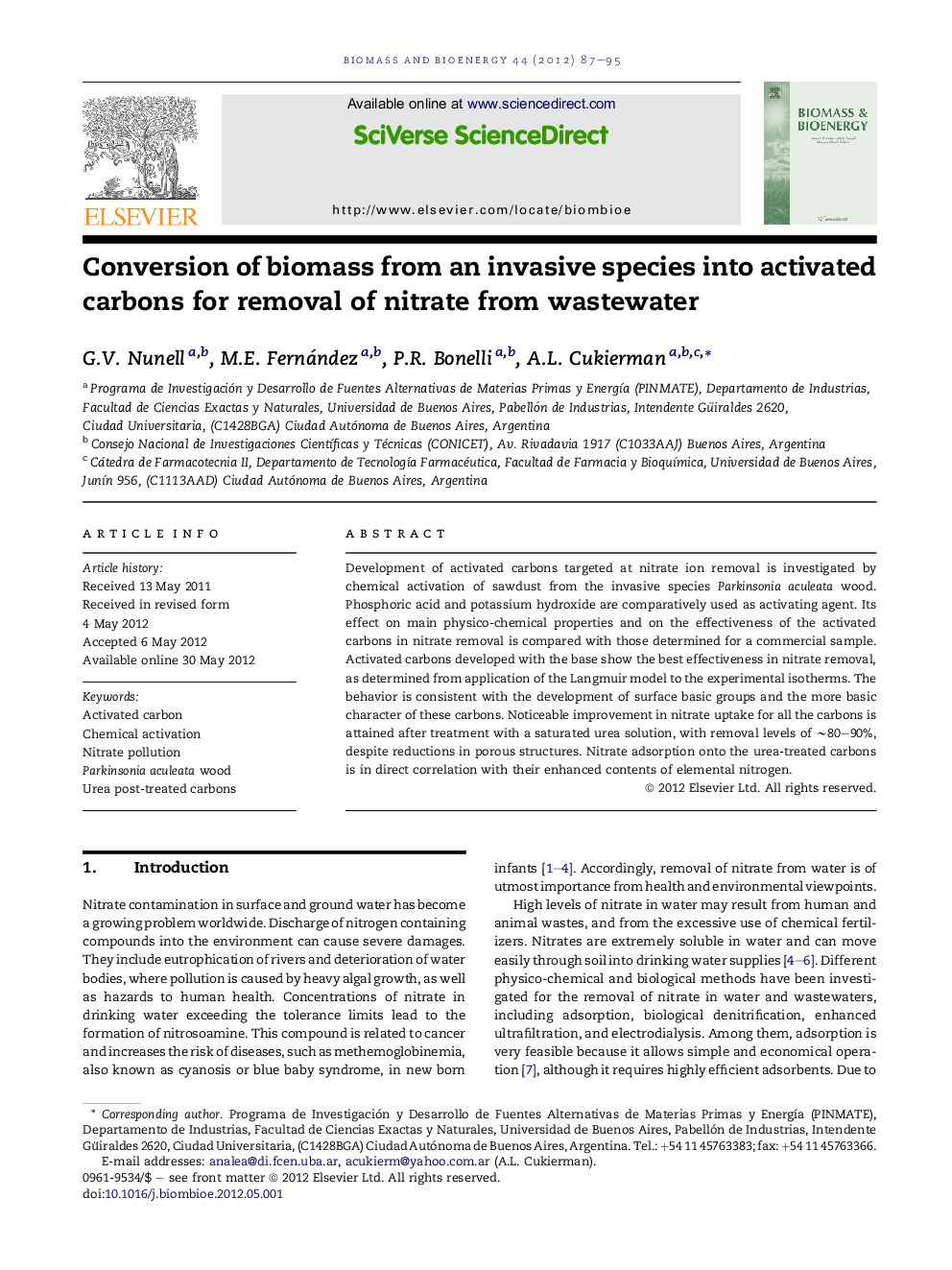| Article ID | Journal | Published Year | Pages | File Type |
|---|---|---|---|---|
| 677322 | Biomass and Bioenergy | 2012 | 9 Pages |
Development of activated carbons targeted at nitrate ion removal is investigated by chemical activation of sawdust from the invasive species Parkinsonia aculeata wood. Phosphoric acid and potassium hydroxide are comparatively used as activating agent. Its effect on main physico-chemical properties and on the effectiveness of the activated carbons in nitrate removal is compared with those determined for a commercial sample. Activated carbons developed with the base show the best effectiveness in nitrate removal, as determined from application of the Langmuir model to the experimental isotherms. The behavior is consistent with the development of surface basic groups and the more basic character of these carbons. Noticeable improvement in nitrate uptake for all the carbons is attained after treatment with a saturated urea solution, with removal levels of ∼80–90%, despite reductions in porous structures. Nitrate adsorption onto the urea-treated carbons is in direct correlation with their enhanced contents of elemental nitrogen.
► Chemically activated carbons from an unexplored biomass are developed with H3PO4 acid and KOH. ► Effectiveness of the carbons in nitrate removal is examined. ► KOH-derived carbons show greater ability in nitrate uptake. ► Urea post-treatment of the carbons improves nitrate uptake in line with enhanced contents of elemental N.
